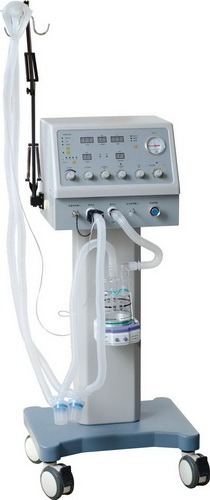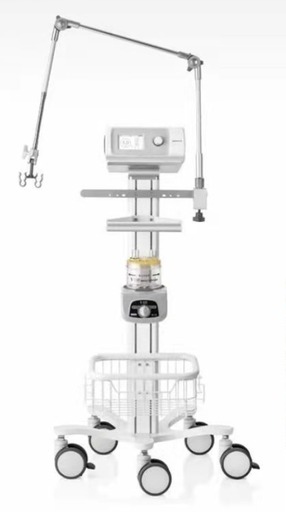Introduction
Ventilator machines are essential life-support devices that assist or fully control the breathing of patients unable to breathe on their own. Whether due to illness, surgery, or injury, ventilators provide critical respiratory support, enabling patients to recover from respiratory failure. With the rise of respiratory diseases like COVID-19, the role of ventilators has become even more prominent in the healthcare world. In this post, we will explore how ventilators work, the risks associated with their use, and their benefits.
What is a Ventilator and Why is It Used?
A ventilator is a medical device designed to help patients breathe when they are unable to do so on their own. The machine works by pushing air (or a mixture of air and oxygen) into the lungs, either helping to initiate breaths or fully controlling the breathing process when a person is sedated or unconscious.
Types of Ventilators:
| Type of Ventilator | Description | Common Use Case |
|---|---|---|
| Invasive Ventilator | Requires a tube inserted into the airway (endotracheal tube or tracheostomy). | Used for severe respiratory failure. |
| Non-Invasive Ventilator | Uses a mask or nasal cannula to deliver air. | Used for less severe cases, like sleep apnea. |

Why is it used?
Ventilators are typically used for patients with:
- Respiratory failure (when the lungs can't provide enough oxygen to the blood)
- Acute Respiratory Distress Syndrome (ARDS)
- Neuromuscular diseases (e.g., ALS, Guillain-Barré syndrome)
- Post-surgery recovery when anesthesia affects breathing.
How Does a Ventilator Work?
A ventilator operates by providing positive pressure to the lungs, helping air enter when the patient’s lungs are not able to do so effectively on their own. The ventilator can be set to either assist the patient’s own breathing efforts or take over completely if needed.
Ventilator Mechanisms:
- Tidal Volume: The amount of air delivered to the lungs with each breath.
- Positive End-Expiratory Pressure (PEEP): Prevents the alveoli (air sacs in the lungs) from collapsing, ensuring that oxygen exchange remains effective.
- Ventilator Modes:
- Assist-Controlled Ventilation (ACV): The machine delivers breaths at set intervals but allows the patient to trigger additional breaths.
- Synchronized Intermittent Mandatory Ventilation (SIMV): The ventilator delivers mandatory breaths at set intervals, but the patient can breathe spontaneously between them.
Risks and Complications of Ventilator Use
While ventilators can save lives, their use is not without risks. Here are some of the common complications:
- Ventilator-Associated Pneumonia (VAP):
- When a tube is inserted into the airway, it provides a path for bacteria to enter the lungs, potentially causing pneumonia.
- Prevention: Elevating the patient’s head, using proper hygiene, and using antibiotics as necessary can reduce risk.
- Lung Injury:
- Ventilator-induced lung injury (VILI) can occur when the pressure or volume of air delivered is too high, damaging lung tissue.
- Example: In ARDS, the ventilator settings are adjusted to avoid overdistension of the lungs.
- Sedation and Delirium:
- Sedation is often used to keep patients calm and comfortable, but it can cause confusion or delirium when it’s time to wake up.
- Managing Sedation: Light sedation is generally preferred to allow patients to interact, but some may require deeper sedation to protect their lungs during ventilation(Yale Medicine).
Key Takeaway:
Ventilators should be used carefully under expert supervision to minimize these risks.

How Long Do Patients Stay on a Ventilator?
The duration a patient stays on a ventilator varies. Some patients may require mechanical ventilation for only a few hours, while others might need it for weeks, especially in severe cases of ARDS or during recovery from major surgery.
Ventilator Weaning:
Weaning is the process of gradually reducing ventilator support to help the patient breathe on their own. It can take days or even weeks, depending on the patient's condition. Tracheostomy, a procedure where a tube is inserted directly into the trachea, may be required for long-term ventilator use(Yale MedicineCleveland Clinic).
Weaning Process:
- Spontaneous Breathing Trials: The patient is gradually given a chance to breathe on their own for short periods.
- Pressure Support: The ventilator reduces pressure settings, allowing the patient to breathe more independently.
- Extubation: If the patient successfully breathes on their own during these trials, the tube is removed.
The Role of Ventilators in COVID-19 Treatment
During the COVID-19 pandemic, ventilators became a critical tool in treating patients with severe respiratory failure. Acute Respiratory Distress Syndrome (ARDS), a complication of COVID-19, often requires ventilator support due to the damage it causes to the lungs.
Prone Positioning and Ventilator Use in COVID-19:
Prone positioning (placing the patient on their stomach) has shown to improve oxygenation in COVID-19 patients on ventilators. This technique helps open up more areas of the lungs that might be collapsed when lying on the back(Yale Medicine).
How to Prepare for Ventilator Use
Being placed on a ventilator can be a daunting experience for both patients and families. It’s important to understand the process, so you can be prepared:
- Comfort and Communication:
- Patients may not be able to speak due to the tube. Family members should be ready to communicate through gestures, writing boards, or lip-reading.
- Sedation is used to make the process more comfortable, but patients may still experience confusion or anxiety(Cleveland Clinic).
- Emotional Support:
- Families often feel helpless seeing their loved one on a ventilator. Support groups, counseling, and close communication with healthcare providers can help ease emotional distress.
Conclusion
Ventilator machines are invaluable tools in saving lives during respiratory failure. However, like any medical intervention, they come with risks that need to be managed carefully. Understanding how ventilators work, their potential complications, and the process of weaning off can help demystify the experience for patients and families. If you or a loved one ever faces the need for ventilator support, knowing what to expect can provide a sense of control during a difficult time.
Final Thoughts
- Ventilators save lives, but they should only be used in a controlled, monitored environment.
- With proper care and modern technology, the risks can be minimized, and the benefits can
- be significant in helping patients recover from severe respiratory conditions.